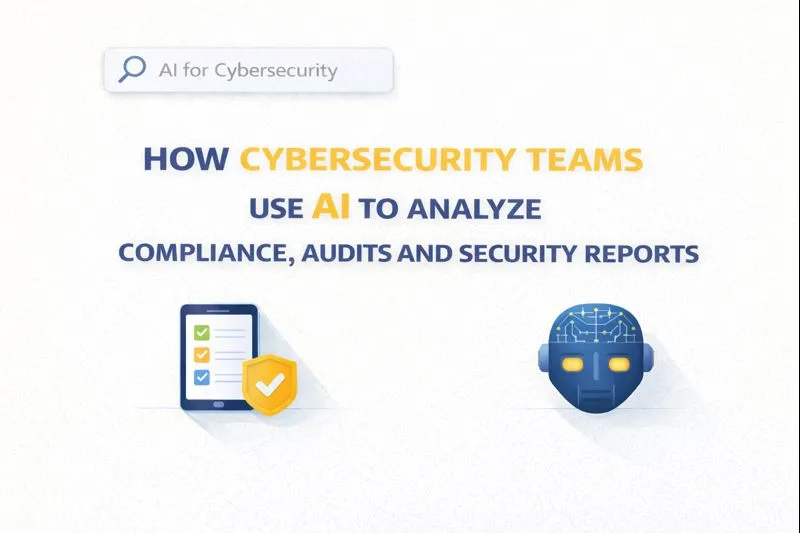Understanding Growth Hacking
TL;DR
What Exactly IS Growth Hacking Anyway?
Alright, let's dive into what growth hacking actually is, because honestly, the name sounds kinda shady, right? Like you're doing something you shouldn't be.
Forget traditional marketing – growth hacking is about turbo-charging a business. Think rapid expansion through smart, experimental methods. It's not just tossing ads out there and hoping they stick, but more like conducting a series of mini-science experiments to see what makes things boom.
- It's not just marketing. Consider it a cross-departmental effort involving product development, client acquisition, and customer retention. Everything is fair game!
- Cost-effective, creative solutions are the name of the game. We're talking about strategies that don't require a massive budget but do demand outside-the-box thinking.
- It’s all about speed. According to salesblink.io, it's a faster method of growth compared to traditional marketing, which can take longer to show results. (Leadlinemarketing.com) Traditional marketing often focuses on awareness and interest, kinda like casting a wide net. Growth hacking, on the other hand, examines the entire funnel to drive leads and conversions. It's a holistic, full-funnel approach.
And here's the thing: traditional marketing tends to stick to "best practices." Growth hacking laughs in the face of "best practices" and instead embraces flexibility and data-driven experimentation. According to Brand24, it's a data-driven approach that prioritizes creativity and experimentation. (Medium.com)
Now that we've explored some effective growth hacking strategies, let's see how these principles have been applied by successful companies.
Why Bother? The Importance of Growth Hacking
Think growth hacking is just a buzzword? Think again. It's about finding those sneaky, unconventional ways to explode your business, and honestly, who doesn't want that?
- Faster monetization: Traditional methods can take ages to show results, but growth hacking? That's about speed, especially when you're trying to get that cash flow going.
- Growth-focused mentality: It's not just about doing a few things differently; it's about fundamentally changing how you think about your business, always looking for that next growth opportunity.
- Market dominance: Let's be real, everyone wants to be on top. Growth hacking gives you a shot at becoming a major player, especially if you're creating demand where there wasn't any before.
According to aboveA.tech, data-driven strategies significantly increase the likelihood of acquiring and retaining customers. (Sciencedirect.com) So, yeah, data is your friend here.
Growth hacking isn't just a set of tactics; it's a whole different way of thinking. According to Neil Patel, "Every decision that a growth hacker makes is informed by growth." (Source: Neil Patel's blog, specific article not provided in original text).
- Growth is everything: Every decision, every strategy, all geared towards one thing: growth.
- Data-driven and agile: It's not about gut feelings; it's about looking at the data, figuring out what works, and constantly tweaking things to make them even better.
- Embrace change: Things change fast, and if you're not ready to adapt, you're gonna get left behind.
So, you're probably wondering, how do I actually do this stuff? Well, that's exactly what we're gonna dive into next.
Building Your Growth Hacking Framework: A Step-by-Step Guide
Growth hacking? It's not some magic formula, but more of a scientific process. And like any good experiment, you gotta have a plan. So, let's build a framework, shall we?
First things first, adopt a scientific approach. I know, sounds boring, but hear me out! It's all about brainstorming ideas, forming hypotheses, and then diving in to implement and analyze the results.
- Think of it like this: you've got a hunch that changing the color of your call-to-action button will increase conversions. That's your hypothesis. Now, test it!
The goal is to create a process that’s scalable, predictable, and repeatable. You know, the kind you can use again and again. It's all about that scientific method.
Now, let's talk goals. You can't just say "I want more money!" You need to break it down. Think smaller, actionable goals that contribute to the bigger picture and, most importantly, are measurable. To do this, identify the key performance indicators (KPIs) that align with your larger objectives. Then, break those KPIs down into smaller, achievable targets. For example, if your KPI is "increase website traffic by 20%," you might set a goal of "publish two new blog posts per week" or "run one social media ad campaign per month."
- For instance, instead of "increase revenue," aim for "generate 100 qualified leads per week through content marketing." That's something you can track!
- Or, if you're in healthcare, maybe it's "reduce patient readmission rates by 5% through personalized follow-up emails."
This is where it gets interesting. Brainstorm with your team, come up with research-backed hypotheses, and then prioritize like crazy. You can't do everything at once.
Implement those experiments with care, testing only one variable at a time. Analyze the results, figure out what it all means, and then share everything with the team. You know, keep everyone in the loop. According to aboveA.tech, data-driven decisions are key for acquiring and keeping customers, so make sure you are tracking!
So, now that you’ve got a framework cooking, let's talk specifics: brainstorming. What kinda ideas should you even be looking for?
Growth Hacking Strategies That Actually Work (in 2024)
Growth hacking strategies? They're not just about throwing stuff at the wall and seeing what sticks. It's about being clever, resourceful, and knowing what's hot right now.
Email List Building: You might think email is old news, but trust me, it's still a goldmine. It's your direct line to potential customers. Imagine launching a new product and having a ready-made audience to announce it to - that's the power of a solid email list, particularly for product launches.
Referral Marketing: Word-of-mouth, but on steroids. It's low-cost customer acquisition with higher retention rates. I mean, who doesn't trust a recommendation from a friend? Incentive programs with referral codes are key.
Strategic Partnerships: Ever heard the saying, "two heads are better than one?" Partnering with brands that complement yours can seriously boost awareness. Think of it as expanding your reach without spending a fortune.
Content Marketing: valuable content educates. It drives leads. Blogs, videos, tutorials -- think of it as being helpful while subtly showcasing your expertise. It's not just about selling; it's about helping people solve problems.
Social Listening: What are people saying about you, your competitors, or your industry? You might be surprised at the insights you can gather just by monitoring social media. Use this to improve products, target marketing, and engage customers.
a/b Testing: Test everything. Landing pages, email copy, ctas. Find out what resonates with your users by showing different versions to segments of your audience and measuring which performs better.
user generated content (ugc): Leverage your users to create content that is authentic and builds trust. According to Sprout Social, consumers trust ugc more than traditional ads due to its authenticity. Encourage customers to share photos or reviews of your products.
Leveraging Trends: What's trending? Jump on it! Keeping up with the latest trends can give you a huge boost in marketing ideas and business plan adjustments. Don't be afraid to be a little opportunistic.
Repurposing Content: Got a killer blog post? Turn it into a video, a podcast, an infographic – you name it. Maximize your reach by adapting content to different formats.
Answering Quora Questions: Quora's a goldmine for driving traffic. Provide valuable answers to relevant questions, and boom, you've got targeted traffic heading to your website. It's about being helpful and subtly promoting yourself.
Creating Free Tools: Free tools (calculators, generators, converters) -- they're like magnets for potential customers. Offer something useful, and they'll come flocking.
Ranking Research: What's ranking at the top? Analyze it. Identify content gaps and opportunities for improvement. You can then create content that's even better and steal the top spot.
According to aboveA.tech, data-driven decisions lead to increased customer acquisition and retention, which leads to profitability.
Let's say you're running a small e-commerce store selling handmade jewelry. Try offering a free ring-size chart as a lead magnet on your website. You might be surprised how many people download it, giving you their email in the process. Use a tool like Mailchimp and create personalized email campaigns based on customer behavior. Did someone view a specific product multiple times? Send them a tailored offer. It can be as effective as it is simple.
Now that we've explored some effective growth hacking strategies, let's see how these principles have been applied by successful companies.
Growth Hacking Examples: Learning from the Best
Okay, so you're probably thinking, "Growth hacking examples? Gimme the goods!" It's not just theory; it's seeing how the big dogs—and the little pups—do it. Turns out, there's a lot to learn from both the classics and the newcomers.
Let's look at some all-star examples, shall we?
- Dropbox wasn't just about cloud storage. They gave users extra space for referrals, which is a win-win, if you ask me. It wasn't just free storage; it was free marketing.
- Airbnb snuck into Craigslist's territory, like a savvy raccoon. They integrated with Craigslist to catch travelers hunting for a place to crash. It was genius because it tapped into an already existing market.
- Hotmail back in the day? Simple. They stuck a signature line in every email, inviting people to sign up. It was like a subtle, "Hey, you should use this too!"
- Dollar Shave Club? Oh man, their viral video was comedy gold. It sold their subscription service like hotcakes, proving humor definitely sells.
Now, for the new kids on the block:
- TikTok is all about that personalized content. User-generated content makes it super addictive. It's like they know your brain better than you do, honestly.
- Canva is available everywhere. Their online design tools are on multiple platforms, and they're agile about it. It means they can adapt to user feedback quickly.
- Nike? They're watching you. Data insights and social media marketing fuel their targeted campaigns. For instance, they might use social media to identify users interested in running and then serve them ads for new running shoes, or use data from their fitness apps to personalize product recommendations. It's like they're whispering sweet nothings into your running shoes.
So, what does all this tell us?
- Simplicity can be deadly effective.
- Creativity is non-negotiable if you want unique growth hacks.
- Turning customers into cheerleaders? That's growth on steroids.
- If your product sucks, no one will share it... product-market fit is key.
According to aboveA.tech, data-driven decisions—which, let's face it, all these examples used—lead to increased customer acquisition and retention.
Now that you are inspired, let's dive into the key takeaways and how to make these strategies your own.
Growth Hacking in Specific Contexts: B2B SaaS, pSEO, and Cybersecurity
Growth hacking? It's not just for startups in silicon valley anymore, ya know? Turns out, different industries can use it too. Let's see how.
B2B SaaS: For B2B SaaS companies, growth hacking often centers on lead generation and customer retention. Content marketing is crucial here, as potential clients are looking for solutions to complex business problems. Offering valuable resources like in-depth webinars, case studies, and insightful blog posts demonstrates expertise and builds trust. For example, a CRM SaaS company could offer a free email template to attract leads, or create a referral program where existing customers earn discounts for bringing in new clients. The focus is on providing ongoing value and nurturing relationships.
pSEO (programmatic seo): Programmatic SEO is all about automating the creation of landing pages at scale to capture long-tail keywords. Instead of manually creating hundreds or thousands of pages, you use data and templates to generate them automatically. This is incredibly effective for targeting niche search queries. Personalizing the content on these pages based on user data, search intent, or location makes them far more relevant than generic pages. For example, a travel company could programmatically generate pages for "best family resorts in [specific city]" or "budget-friendly hotels near [specific landmark]." According to aboveA.tech, data-driven decisions are key for acquiring and keeping customers, and pSEO is a prime example of this in action.
Cybersecurity: In the cybersecurity space, trust and credibility are paramount. Growth hacking often involves offering free tools or resources that solve immediate problems for users. A free vulnerability scanner, a password strength checker, or a data breach notification service can attract a large audience and establish your company as a helpful authority. Partnering with cybersecurity influencers or reputable publications can amplify reach and build further trust. The goal is to provide tangible value upfront, which can then lead to conversions for paid services.
So, there you have it, growth hacking isn't one-size-fits-all, it's adaptable! Speaking of adapting, let's wrap things up with some key takeaways.
Common Growth Hacking Mistakes (and How to Avoid Them)
Growth hacking sounds cool, right? Like you're about to discover some hidden cheat code to explode your business. But truth is, there are some common pitfalls you gotta dodge.
Ignoring user feedback is like driving with your eyes closed. You need to listen to what your users are saying, what they like, what they hate. For instance, a healthcare app ignoring complaints about a clunky interface will lose users faster than you can say "usability issues". Users might be complaining about the app being difficult to navigate, leading to frustration and them switching to a competitor.
Focusing only on getting new users is like filling a bucket with holes. Sure, acquisition is important, but what about keeping those customers happy? A retail store that spends all its energy on ads but neglects customer service will see those new faces disappear quick. For example, if a new customer has a bad experience with shipping or returns, they're unlikely to become a repeat buyer, negating the acquisition effort.
No goals, no glory. Implementing growth strategies without clear, measurable goals is like setting sail without a map. A financial services company implementing a referral program should track how many leads and conversions come from it. If they don't set a goal for the program, like "acquire 50 new clients through referrals this quarter," and don't track the source of those clients, they won't know if the program is actually successful or just a waste of time.
Adapt or die. The market's always changing and no strategy will last forever. Think of Blockbuster not adapting to streaming services. Ouch. Their inability to pivot from physical rentals to digital streaming meant they went out of business.
So, what's the takeaway? Growth hacking is about more than just quick wins. Its about getting it right for the long haul, and that means, like, paying attention.




